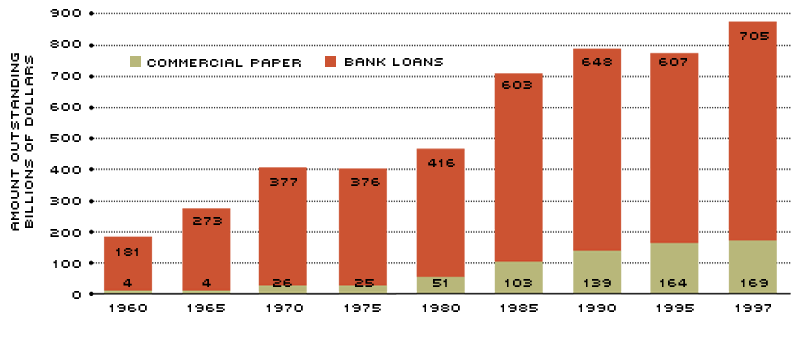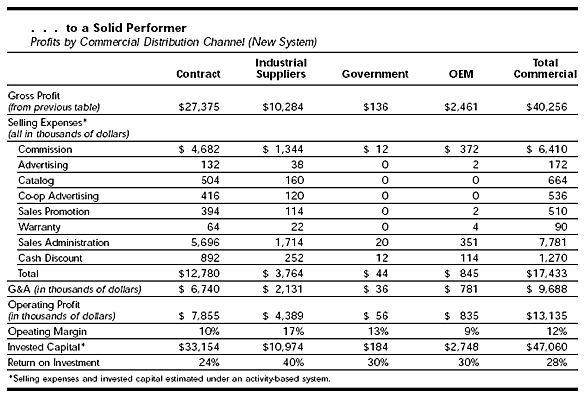How To: Calculate Workers Comp Cost Per Employee
Contents:


Small businesses that benefit from this type of policy often have few risks and a small number of employees. One of the groups that workers’ compensation laws most commonly do not cover across all states is what’s called casual employees. A casual employee is a worker who does not have set hours or a specific amount of hours.
Use the calculator to add up employee payroll, then get a free quote from WorkCompOne in just minutes. For those not in base rate states, the premium could vary based on the insurer you choose. If you’re able to find the insurance rates for your business, enter them in the fields labeled “Rate.” Some of these people can be considered non-employee workers and excluded from coverage without penalty; however, it’s important to note that they may count toward the total number of employees. Also, some states have industry-specific exceptions to the employee minimum; common ones include agriculture, domestic workers, trucking and construction.
Because insurance companies use different factors to determine workers’ compensation insurance costs, small businesses likely pay different rates. They also oversee and approve all workers’ comp rates and the class codes used by insurance comapnies to categorize businesses. Surprisingly, workers’ compensation rates may vary by over 100% depending on where the business is located.
How are workers’ compensation premiums calculated?
Premium discount for companies with larger premiums (usually only applies to businesses with a premium above $10,000 per year). For the most accurate and best price, request a quote from several insurance carriers. Or, use an independent agency, which can shop around and present you with the most competitive quote.
What is a Compa-Ratio? How to Calculate – ADP
What is a Compa-Ratio? How to Calculate.
Posted: Wed, 18 Jan 2023 20:44:49 GMT [source]
While rates area unit specific to every category code, broad rates area unit typically raised and lowered at an equivalent time and as a share. You should also consider how much experience your employees have and the type of equipment they are using. In general, workers’ compensation audit insurance premiums square measure supported the chance of experiencing claims prices combined with the worth of what’s being insured. During this case, the risk is taken into account the potential value of future work injuries . Deciding whether to enroll in a workers’ compensation policy is a personal one that involves balancing costs and benefits. To learn more about workers’ compensation laws, talk to your insurance agent.
Average Workers Comp Settlement Amount
See if your business qualifies for better rates amd lower the cost of workers’ comp insurance. Business owners should be focused on preventing and/or managing claims to help protect their Emod. Employers should also be selective in what agents they choose to represent their business. Insurance company underwriters view businesses as potential risk. Good agent help qualify their customers for additional underwriting credits or state credits available to them.
Keep in mind that it’s possible for a business to have more than one class code. The business will be credited or debited the difference based on actual pay at that time. Excluded from “gross wages” are tips or other gratuities, payments for group insurance or group pension plans, expense reimbursements and other fringe benefits. At the annual policy audit, actual wages must be calculated and reported to reflect any changes. Your state may also determine your business’ unique experience mod by comparing your company to others in your industry. Premium credits for such things as a formal safety program, safety officer on staff, or other measures of your company’s commitment to a safe workplace.
IRS issues standard mileage rates for 2023; business use increases … – IRS
IRS issues standard mileage rates for 2023; business use increases ….
Posted: Thu, 29 Dec 2022 08:00:00 GMT [source]
If a settlement is reached the employee most likely will be able to choose how it is paid out. They can choose a lump-sum, where they get the full amount up-front. Or they can choose a structured settlement that spreads the total out over monthly payments. Insurance companies can offer a payment sum that they think is fair.
What Is The Average Workers Comp Cost Per Employee?
The state of Washington is the only state that offers a premium rate per hour worked versus an annual premium based on payroll. In most cases, you can pay for your workers’ comp premium all at once, or you can split it up into monthly payments. About 30% of workers compensation cases are sprains and strains, many times from heavy lifting, according to The Hartford. In most cases, these injuries take about 12 days before an employee can return to work.
Overall, workers’ compensation premiums accounted for 1.2% of the total cost of employing the average American worker. This estimate is based on wage and premiums data from the Bureau of Labor and Statistics. And because workers’ compensation is regulated at the state level, workers’ compensation rates differ based on the state where employees work.
Read on for stepwise directions, and different factors that play a job in your final workers’ compensation audit quote. Determine Actual Work Hours– The next step is to determine the Actual Work Hours of the Employee. This is an area in which people often get wrong as these are the hours in which the employee is Actually Working, which is often much lower than the paid hours.
Your final work comp premium is adjusted up or down at the tip of the policy year to account for over- or under-estimating payroll. The issue in the past has always been that a complex spreadsheet with lots of formulas was required to figure out what that actual cost was. I have read so much online, tried so many applications, and so I wanted to take what I learned and boil it down into just 7 simple, easily digestible, steps. You should also take into account any benefits your employees may be eligible for, such as health insurance or retirement plans. Additionally, you should calculate the cost of training your employees, if necessary. Consider the number of hours worked each week, and multiply that by the employee’s hourly rate to arrive at total compensation.

At Cerity, we make it as easy as possible for you to purchase insurance that protects your business. Tell us a little bit about your business to get an affordable rate, and you can buy a policy online in minutes to cover you for the year ahead. We’ve created an interactive calculator to make it easier to estimate your workers’ compensation premium . For hourly workers can be more difficult because of their varying work schedule.
Further, being careful to avoid any errors with https://1investing.in/ and employee classifications can prevent overpaying. Workers compensation insurance pays for medical care, lost wages and other benefits should an employee get hurt or sick on the job. It is an important insurance coverage and one that is required of businesses in most states. Before we dig into the nitty-gritty of the variables involved in calculating workers comp costs, we’ll first introduce a general formula for calculating workers comp premiums. 5.Reducing the number of accidents or injuries, taking more safety precautions, and having the right insurance are all good ways to lower workers’ compensation costs.
florida income tax rate compensation costs have continued to increase year-over-year since 1998. Whether you’re self-insured or covered by a commercial carrier, understanding the true cost of your workplace injuries is the first step toward reducing them. With more than 200 years of experience,The Hartfordis selected among the nation’s top workers’ comp insurance carriers. In general, workers’ compensation insurance premiums are based on the risk of experiencing claims costs combined with the value of what is being insured. In this case, risk is considered the potential cost of future workplace injuries within each industry, safety programs, your loss experience and the zip code that your business operates in. We then estimated the cost for private employers if they employed a worker full-time throughout a year to find the annual and monthly costs.
Social Security tax is 6.2 percent of the taxable wages paid to each employee each year (up to $127,200 for 2017, a number that changes annually). Knowing the true cost of an employee is one thing, but if you’re not including the cost of overhead in your equation, you could be under-billing your clients and losing money! Knowing how to accurately calculate the cost of overhead for each employee will help you determine what to charge and how to remain profitable. Educating your employees on safety within the workplace can help prevent slips and falls and other accidents. Workers comp is a crucial component of a small business insurance plan.

Figuring out how to calculate your workers’ comp cost per employee means connecting with an insurance provider to determine your annual premium. Once you have a policy, your insurer will perform an audit to ensure you are paying the correct amount based on how many employees you have and what activities they perform. In most states, private insurance companies provide all or some of the workers’ compensation insurance policies available to businesses. Some states have a mixed system in which the state also runs a workers’ compensation insurance program that can be used to purchase insurance. Finally, a few states have a fully state-run system, in which workers’ compensation insurance is required to be purchased from the state.
- 3.Figure out how much your employees are paid per hour and factor that into your calculations.
- Your insurance costs are based on what job classification you have.
- Many insurance providers offer discounts for those who pay their insurance premiums on an annual basis.
- By following these five tips, you can easily calculate the workers’ compensation cost per employee.
To get an idea of how much your business might pay for workers’ compensation coverage, follow these steps. Also they often miss the small print when it comes to their insurance carriers who often reserve the right to adjust insurance premiums, in a move they call an experience modification. This allows them to raise your premium if they have incurred losses from consecutive claims. The information contained on this page should not be construed as specific legal, HR, financial, or insurance advice and is not a guarantee of coverage. In the event of a loss or claim, coverage determinations will be subject to the policy language, and any potential claim payment will be determined following a claim investigation.
Base rate states require all insurers to use the workers’ compensation rates set by the state rating agency. Remember, the steps we just went through for how to calculate workers’ comp cost per employee will give you a very rough estimate. Other factors—such as the number of employees, location, and experience modification—can influencehow much workers’ compensation costs. State workers’ compensation rates are designed to reflect the cost of claims and losses for scope of job, or class code. Class codes with greater loss frequency and/or severity will cost more based on the statistical data of any given state. However, the loss data for similar class codes can be significantly different by state.

Then, get out your calculator and divide the employee’s annual payroll cost by 100. This step looks the same for any employee, whether they are full time, part time, temporary, or seasonal staff. Keep your workers’ comp calculator close, because you will use it again soon. Calculating your workers’ comp audit value per worker involves understanding your payroll numbers. Take into thought all of your staff UN agency ar full-time, part-time, temporary, or seasonal.
